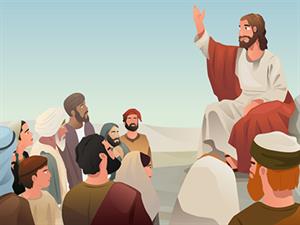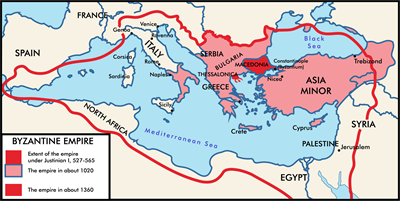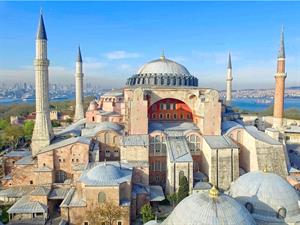
PUMPA - SMART LEARNING
எங்கள் ஆசிரியர்களுடன் 1-ஆன்-1 ஆலோசனை நேரத்தைப் பெறுங்கள். டாப்பர் ஆவதற்கு நாங்கள் பயிற்சி அளிப்போம்
Book Free DemoThe Messiah:
1. The Roman empire had the majority of Jewish people who enjoyed the patronage of rulers and experienced limitless freedom. Post the times of Solomon and David the religious and political freedom went on the wane.
2. The Jewish people experienced major hardships, as the rule change was not in favour of them. They experienced religious and linguistic persecution under the constantly changing rule of Rome.
3. They strongly believed that a “Messiah (saviour of the people)” would arrive and ameliorate their struggling conditions and restore the old glory of their lives.
Jesus:
The dejected group of Jews followed the teachings of a Jewish carpenter, “Jesus”, who ignited the suffering minds of people with positive thoughts and willpower.

Jesus with his Disciples
The religion of Christianity thus began with some Jewish philosophers started following the tenets of Jesus. He questioned the authority of the leaders, and the unbalanced social orders prevailed at that time.
The principles of Jesus questioned the rich people and their ceremonies that belittled the commoners.
Pontius Pilate: He was the governor-general of Rome who ordered the crucifixion of Jesus. The Jewish nobility, which felt threatened, was behind this decision of the Roman general.
St. Paul and Christianity:
1. Post the crucifixion of Jesus, who was seen as a political rebel by the Roman state, the religion of Christianity spread like wildfire and attained many followers.
2. St. Paul, a Jew by birth was inspired by the teachings of Jesus adopted his tenets which he believed was full of zeal. He began to spread Christianity in Jewish dominated areas which further expanded the boundaries of the religion.
3. A part of Roman people slowly accepted the religion of Christianity, which again became a bone of contention when the followers of Christianity began to disrespect the emperor of Rome.
Persecution and Split in Christianity:
The disrespect shown by the Christian people earned the wrath of the emperor, who ordered the persecution of the followers of Christianity. Brutal punishments were given, and their properties were confiscated.
In the meantime, Christianity witnessed a split where the followers of St. Paul formed a group and the brother of Jesus “James” and his followers formed another group.
The Byzantine Empire:

The Byzantine empire
The Byzantine civilization or the Eastern European empire traced its origins to \(\text{330 AD}\) claimed the lineage of Romans. This empire was established by the Roman emperor “Constantine I” in an ancient Greek colony named “Byzantium”.
Byzantine: This term was derived from the root word “Byzantium”, which was an ancient Greek colony founded by Bysas.
Constantine announced Christianity as the religion of his state. The citizens of the eastern empire identified them as Christians and spoke the Greek language even though they claimed the lineage of Rome.
The Constantinople:

St. Sophia Cathedral
The city of Constantinople served as the capital of the Byzantine empire, which had huge buildings, libraries, and lavishly built royal palaces. The city gained the attention of Historians all over the world and became an inevitable part of Byzantine history.
St. Sophia Cathedral: It was built in the city of modern-day Istanbul. Considered the greatest Cathedral with innovative architecture, the towering edifice was converted into a Mosque during the reign of Ottoman Turks. It is also known as “Hagia Sophia”.
The economy of Constantinople was concentrated on the hands of large landowners, and the people of the lower class suffered their entire life.
The Fall of Constantinople:
1. The city ruled by weak emperor’s threatened the existence of the empire, which faced external invasions from the Crusades and the Ottoman Turks. The death blow for the Byzantine empire was given by the Ottoman Turks when they invaded and destroyed the city of Constantinople in \(1453\).
2. The Curtains for the mighty Byzantine empire came during the reign of “Constantine XI”, as he was killed in the battle against the Ottomans.